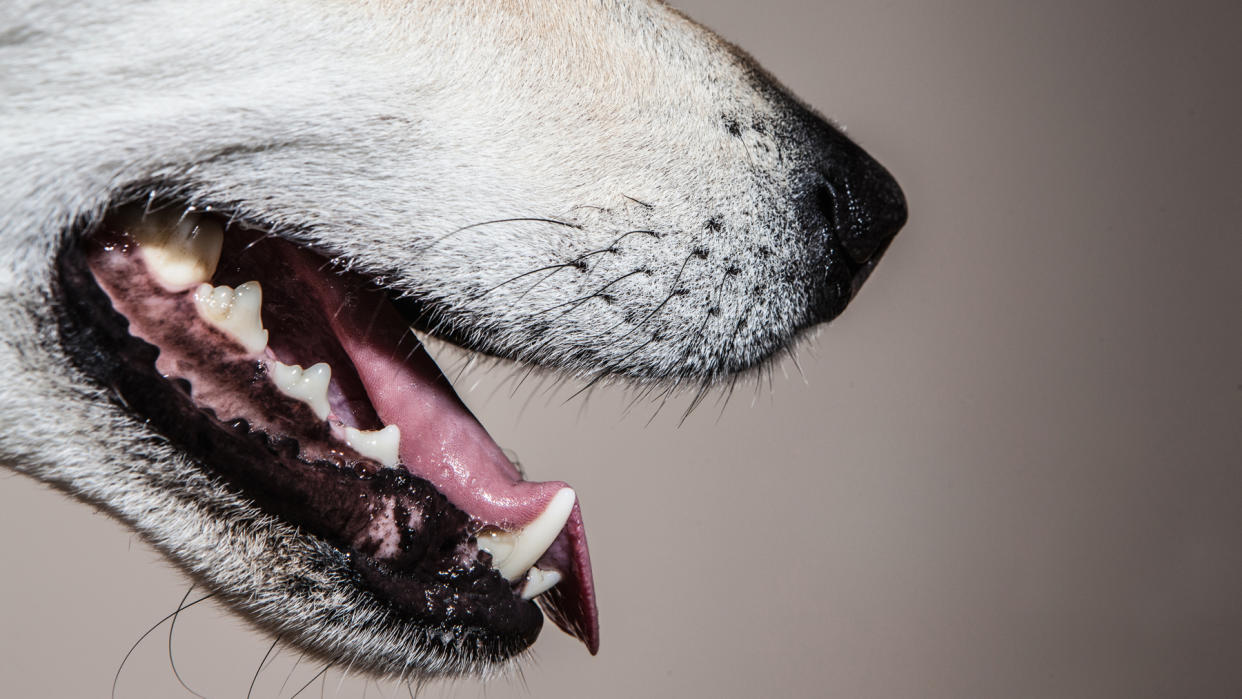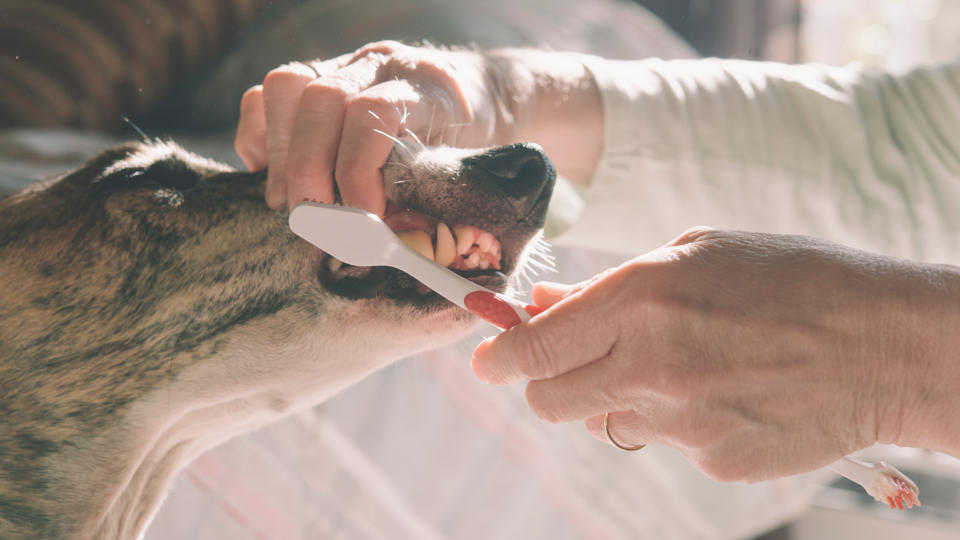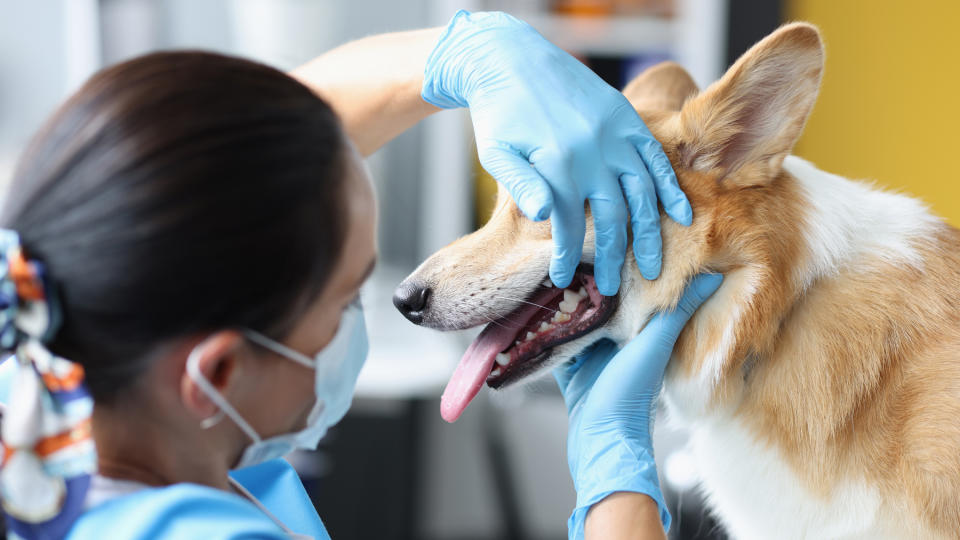What should you do with a loose dog tooth?

It can be really worrying when we find a loose dog tooth in our adult canine’s mouth or if they actually lose a tooth. This is because dogs have incredibly strong jaws, with teeth capable of ripping flesh and chewing through bone.
If you’ve lived with your dog since they were a puppy you’ve no doubt experienced them losing their first set of teeth. However, it’s not expected for us to see our older dogs losing a tooth so when it happens it can be quite a shock. You might discover a loose tooth while brushing your dog’s teeth, which is a great way to keep an eye on the condition of your canine’s mouth. If the loose tooth issue has progressed to your dog actually losing teeth, then you may find a tooth stuck in their favorite longest lasting chew or see one laying on the floor when you’re cleaning.
We know good oral hygiene is an important indicator of the overall health of our dogs. So what do we do if we find our dog's teeth are loose? We’re here with our go-to guide to ease your concerns and help you take action at this worrying time.
Is it normal for a dog to have a loose tooth?
If you have a young puppy it is normal to notice loose teeth or the loss of teeth. This usually occurs around 14-20 weeks of age as your puppy’s adult teeth start to come through.
However, it isn’t normal for an adult dog to have loose teeth. Tooth loss can indicate the presence of gum disease or that there’s been some sort of injury or trauma to their jaw. In both of these situations your dog will require veterinary treatment to protect the rest of their teeth and to ensure no other underlying health issues are present.
Loose teeth or periodontal disease can be painful. Some early signs that your dog is uncomfortable may include them stopping eating, licking their lips, drooling, or moving away from you when you try to touch them near their face. It’s important to always remember that a dog may act differently to their usual behavior when in pain, so be mindful of this when doing any examinations of their gums or teeth.
If you’re concerned about the health of your dog’s teeth, the first place to look at is their gums to see if they appear healthy or not. Dog’s gums should be a soft, pale pink and this should change in shade to white (and back to pink) if you press on the surface of the gum.
If you’re still unsure, check out this list to familiarize yourself with some of the signs of healthy and unhealthy gums.
Healthy gums
Baby pink
Wet and soft
Teeth firm in place
No red rims around the edge of the teeth
When you press on the gum itself, you should see the gum change from white back to pink when you’ve removed your finger
Unhealthy gums
White (without you pressing on the surface), grey, blue, yellow or bright red in color
Bleeding
Red rims around the gumline
Dog appears in pain when they’re touched
Growths (can be unconcerning, but always worth checking)
Dark layers of plaque over or between the teeth
On top of the gum health itself, look at the color of your dog's teeth. If a tooth has been damaged, then it may have discoloration that’s different to any usual level of plaque your individual dog may have. You might also notice that your dog’s breath is starting to smell less than sweet!

What are the causes of a loose dog tooth?
Gum disease, such as gingivitis and periodontitis, can occur for a number of reasons. Most commonly they’re caused by a buildup of bacteria in the mouth, but age or genetics can also play a role. According to MSD Veterinary Manual, the leading cause of tooth loss in dogs is if “gum (periodontal) disease goes untreated”.
If you’ve lapsed on regular tooth brushing your dog may be more susceptible to gum disease or they may need a deep clean at your veterinary surgery to avoid disease setting in.
As gum disease sets in, according to MSD Veterinary Manual “the number of bacteria below the gumline increases, bacterial waste products, such as hydrogen sulfide, ammonia, acids, and other compounds, accumulate and damage tissues.” What’s interesting is that, “the dog’s own response to this infection (inflammation) also causes tissue breakdown and loss of the tooth’s supporting tissues.”
Other causes of tooth damage or loss, can be attributed to trauma caused through injury or chewing of items that are too hard such as bones from weight-bearing parts of larger animals or metal.
Cancer of the jaw bone can also result in tooth loss or them becoming loose. This is another reason to get any signs of oral discomfort checked by your vet early to ensure any available treatment is started immediately.
What should you do with a loose dog tooth?
Registered Vet Nurse, Rachel Bean says that for dogs, “Just like us, teeth can become loose. It is always a good idea to regularly check your dog's teeth and always have regular check ups at the Vets.” Keeping an eye on your dog’s oral hygiene through regular brushing will allow you to catch any loose teeth early on. “Loose teeth will need veterinary attention”, Bean continues.
Never try to remove the tooth yourself. You could cause more damage to the tooth and surrounding gum, or you could risk causing an infection if the area isn’t cleaned properly.

Is treatment required for a loose dog tooth?
Whenever you see a change in your dog’s physical well-being, it's important to get them checked by your vet. In the case of loose teeth, your veterinarian will be able to determine whether or not the tooth can be saved or needs to be extracted. They will also be able to advise on any required follow-up treatment. To save a tooth, a root canal may need to be performed which can be costly. When arranging insurance for your pets, always ensure that dental treatment is covered.
To prevent further tooth loss, it’s important to continue with regular tooth brushing. When cleaning your dog’s teeth, make sure you’re using a dog-specific toothpaste, not a human one as it often contains xylitol which is toxic to dogs. You can also use coconut oil smeared onto a piece of gauze to clean your dog’s teeth. Regular checkups with your dog’s veterinary hygienist is also a good idea.
The American Veterinary Medical Association recommends that “Your pet’s teeth and gums should be checked at least once a year by your veterinarian for early signs of problems and to keep your pet’s mouth healthy.”
Now that you're clued up on loose dog teeth you might be wondering 'do dog teeth fall out?', especially for adult dogs. We got a vet to delve into the ins and outs of adult tooth loss in dogs and what to look out for.